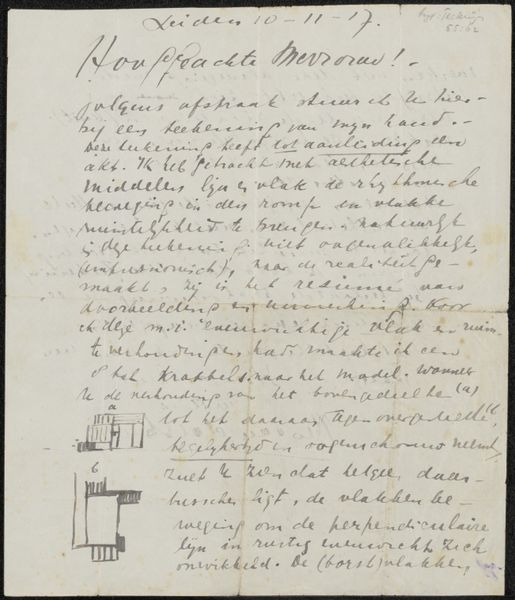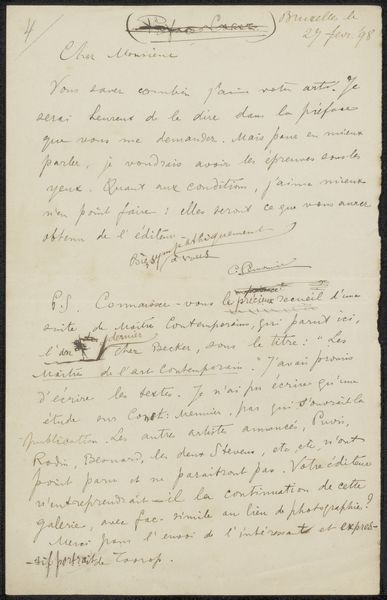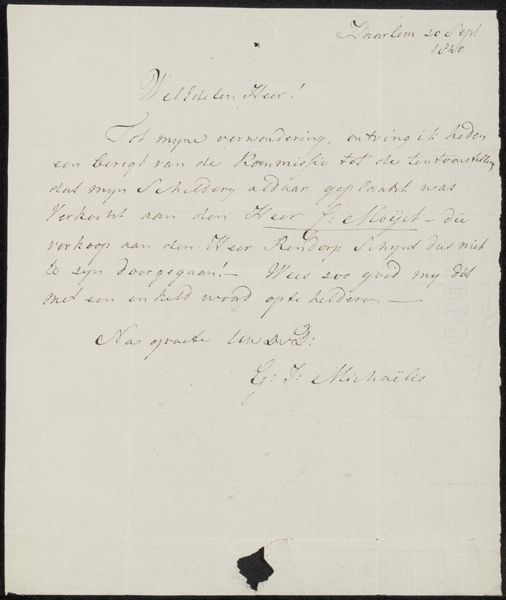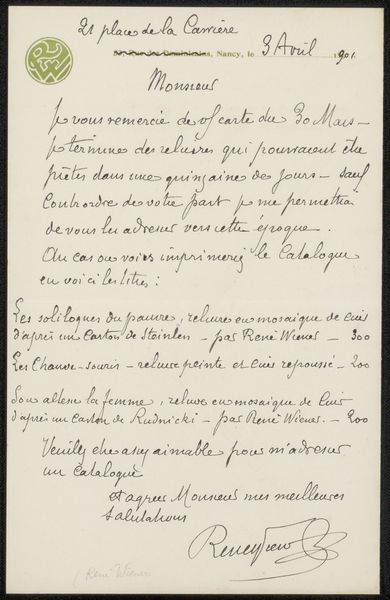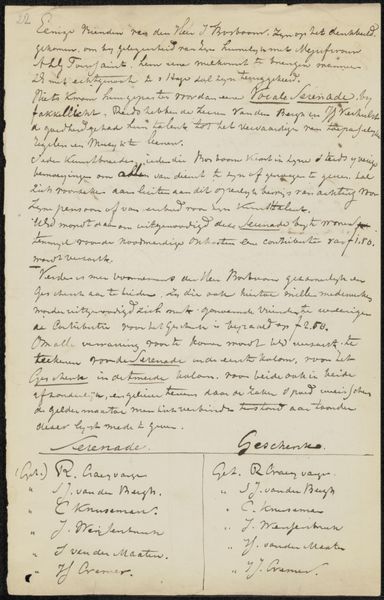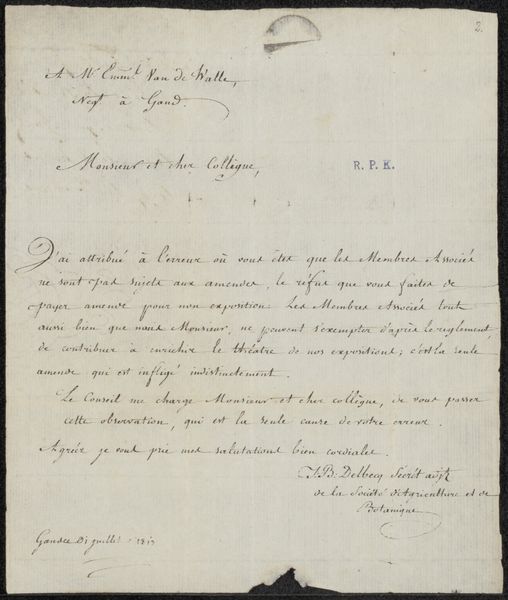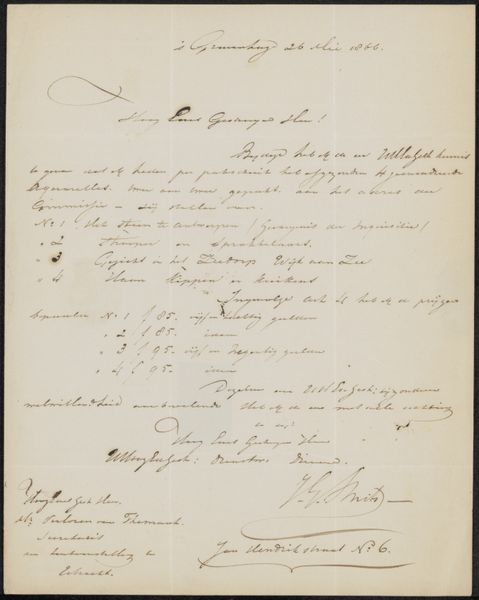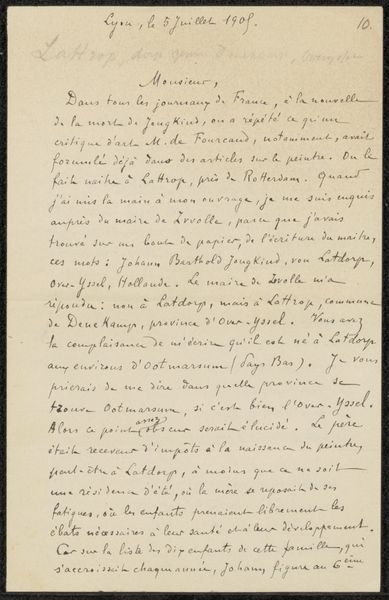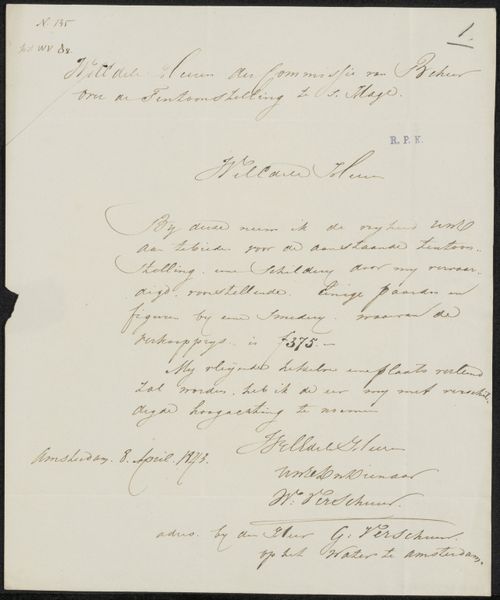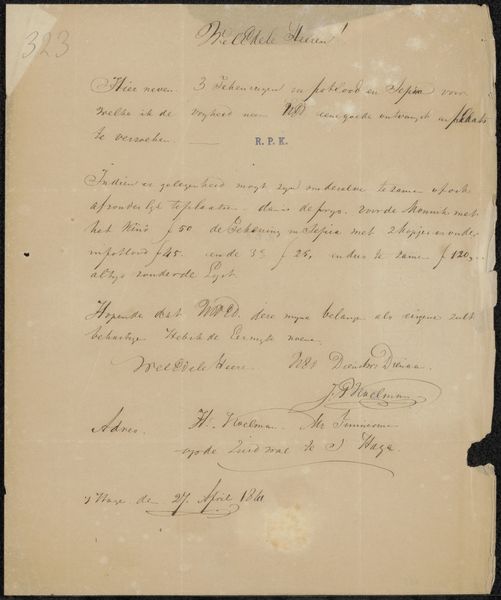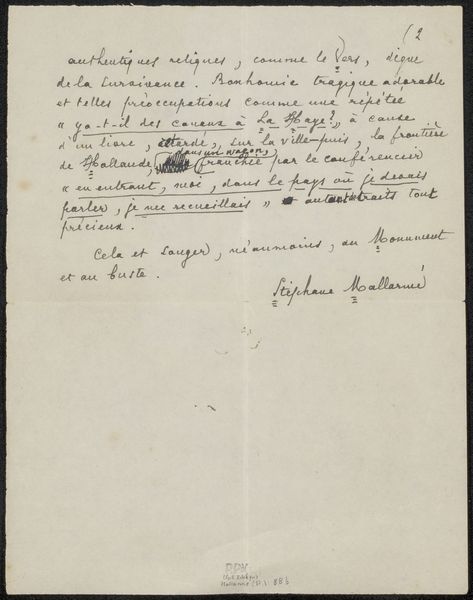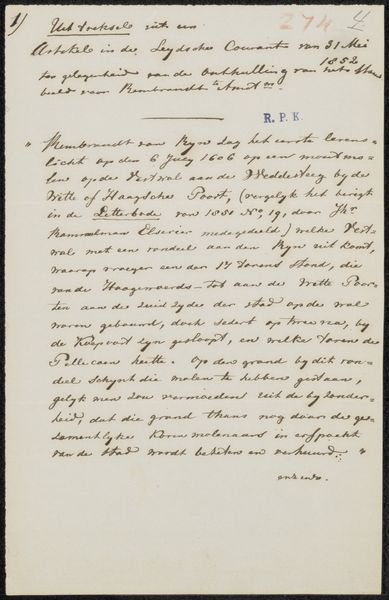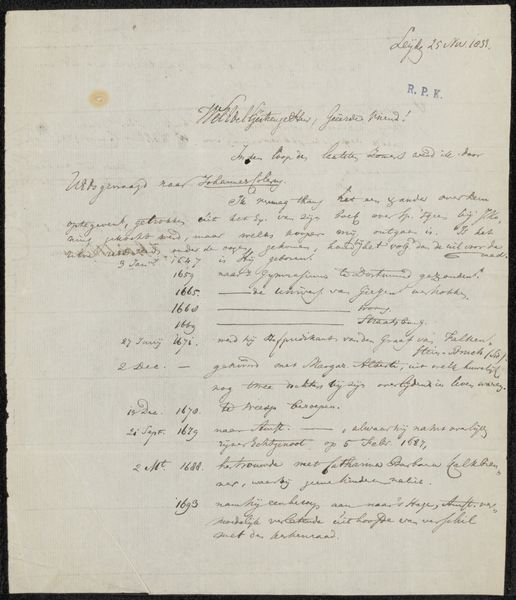
drawing, paper, ink, architecture
#
drawing
#
paper
#
ink
#
sketch
#
architecture
Copyright: Rijks Museum: Open Domain
Editor: So, this drawing is entitled "Brief aan Jan Veth" and is possibly from 1899 by Karel Petrus Cornelis de Bazel. It appears to be a sketch, probably in ink on paper, and seems to show architectural plans. The handwriting makes it feel really intimate, almost like we're looking at a private conversation. What strikes me is how functional it appears; not art for art’s sake, but serving some other purpose. What do you see in this piece? Curator: As a historian, I see this "Brief aan Jan Veth" as a fascinating artifact reflecting the burgeoning role of architects and designers in shaping the domestic sphere around the turn of the century. Consider, this is a letter, suggesting direct engagement in the building or renovation project. De Bazel isn't just creating an aesthetic object; he's participating in the practical construction of living space. This resonates with larger social shifts where design was increasingly considered a tool for social reform and improving the quality of life for citizens. Editor: I hadn't thought about it that way! So it's not just about the architectural plans, but what those plans *represent* within a specific historical context? Curator: Precisely. The inclusion of handwritten notes alongside the drawings is critical. How might those notes suggest not just the building's design, but also communication norms? Moreover, what relationship existed between de Bazel and Jan Veth and how might that influence their interaction and creative control of the final product? The text alludes to certain practical considerations - how does the architect approach integrating contemporary ideals of living with current realities and practical requests? Editor: It's like the drawing becomes a window into the architectural profession at that time. Thanks, I’ve definitely gained a richer understanding! Curator: And I have come to appreciate this small but intimate letter as representing not only what the designer had to contribute to design, but who their design were really for: the users of the future architectural space.
Comments
No comments
Be the first to comment and join the conversation on the ultimate creative platform.
